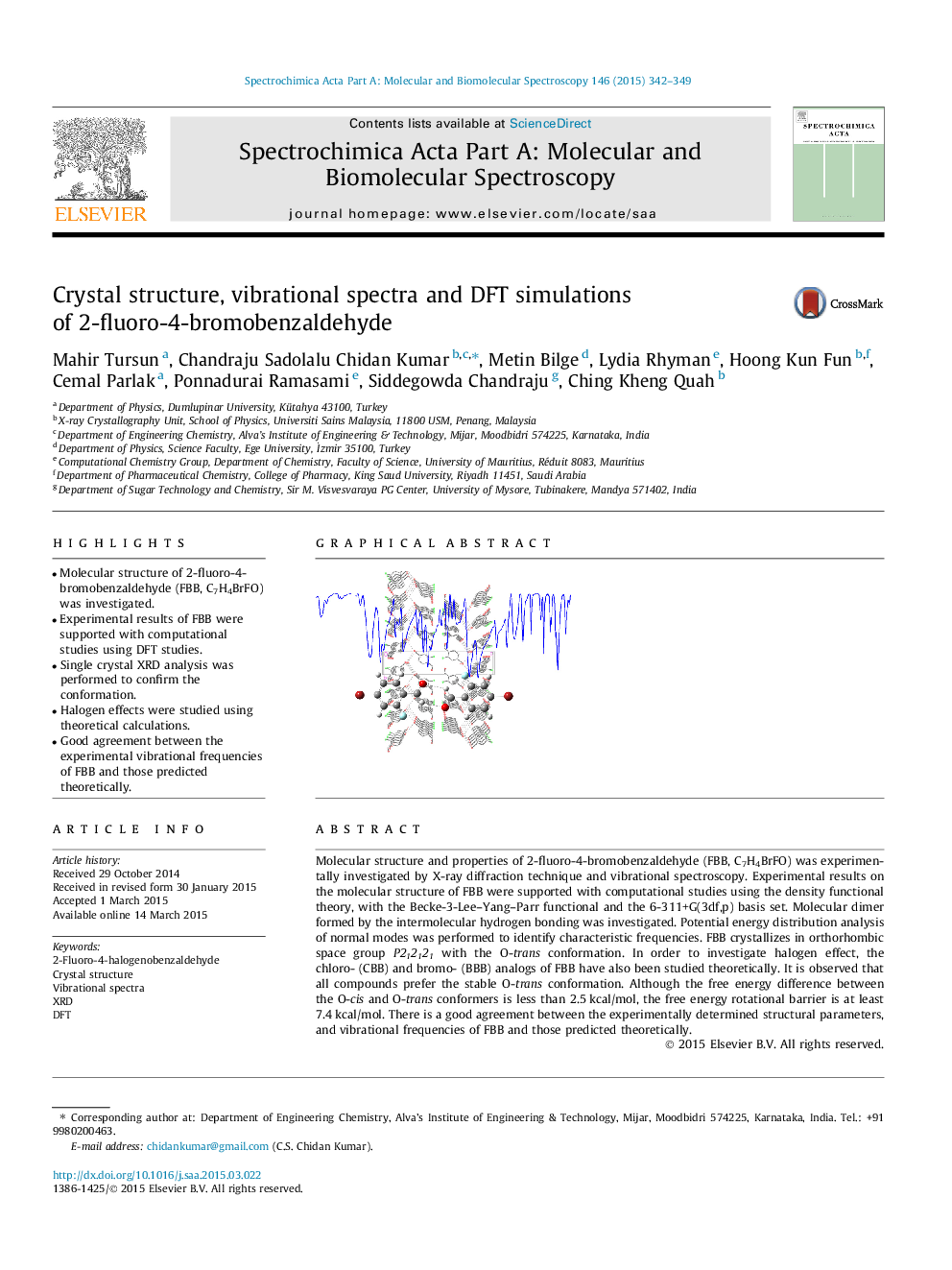| Article ID | Journal | Published Year | Pages | File Type |
|---|---|---|---|---|
| 1231932 | Spectrochimica Acta Part A: Molecular and Biomolecular Spectroscopy | 2015 | 8 Pages |
•Molecular structure of 2-fluoro-4-bromobenzaldehyde (FBB, C7H4BrFO) was investigated.•Experimental results of FBB were supported with computational studies using DFT studies.•Single crystal XRD analysis was performed to confirm the conformation.•Halogen effects were studied using theoretical calculations.•Good agreement between the experimental vibrational frequencies of FBB and those predicted theoretically.
Molecular structure and properties of 2-fluoro-4-bromobenzaldehyde (FBB, C7H4BrFO) was experimentally investigated by X-ray diffraction technique and vibrational spectroscopy. Experimental results on the molecular structure of FBB were supported with computational studies using the density functional theory, with the Becke-3-Lee–Yang–Parr functional and the 6-311+G(3df,p) basis set. Molecular dimer formed by the intermolecular hydrogen bonding was investigated. Potential energy distribution analysis of normal modes was performed to identify characteristic frequencies. FBB crystallizes in orthorhombic space group P212121 with the O-trans conformation. In order to investigate halogen effect, the chloro- (CBB) and bromo- (BBB) analogs of FBB have also been studied theoretically. It is observed that all compounds prefer the stable O-trans conformation. Although the free energy difference between the O-cis and O-trans conformers is less than 2.5 kcal/mol, the free energy rotational barrier is at least 7.4 kcal/mol. There is a good agreement between the experimentally determined structural parameters, and vibrational frequencies of FBB and those predicted theoretically.
Graphical abstractFigure optionsDownload full-size imageDownload as PowerPoint slide
